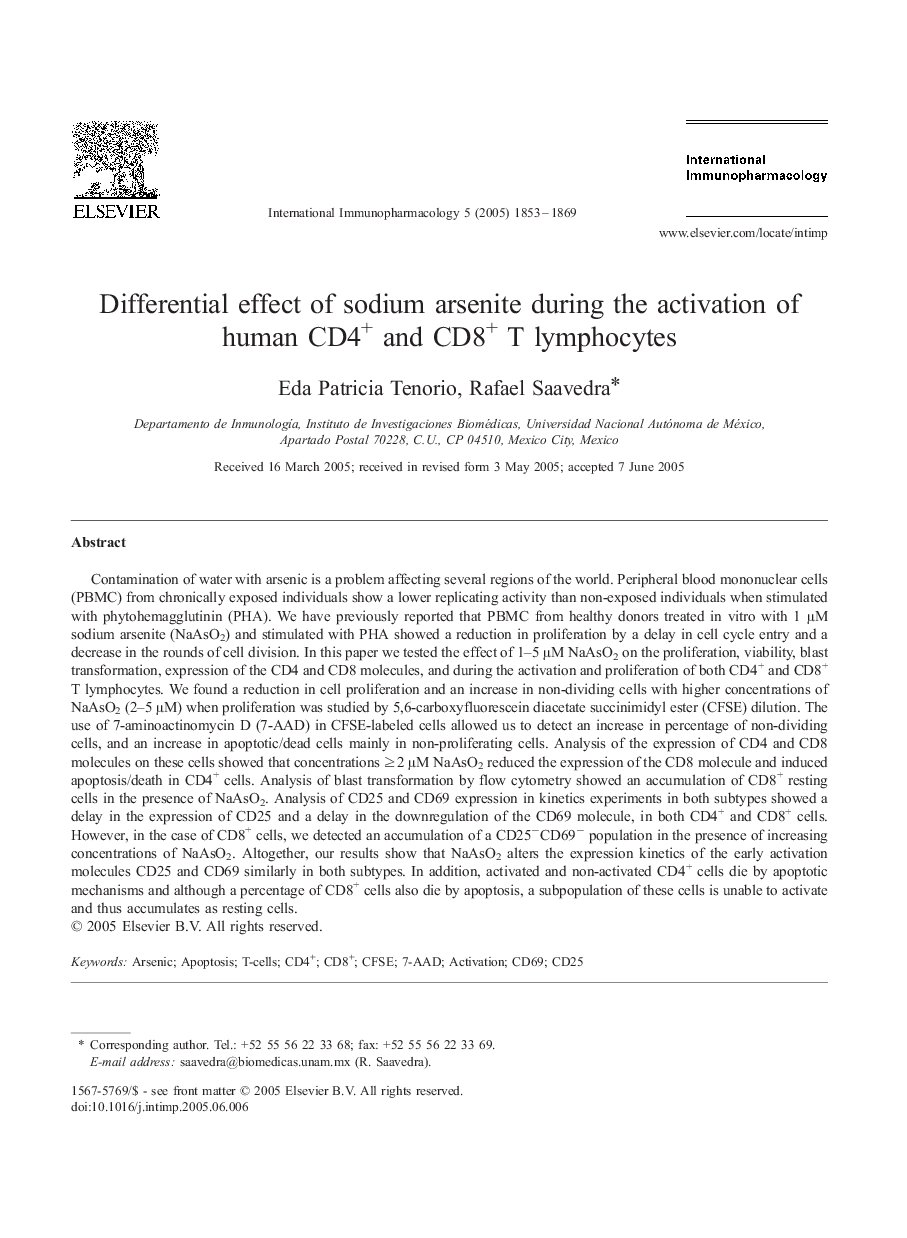| Article ID | Journal | Published Year | Pages | File Type |
|---|---|---|---|---|
| 9007778 | International Immunopharmacology | 2005 | 17 Pages |
Abstract
Contamination of water with arsenic is a problem affecting several regions of the world. Peripheral blood mononuclear cells (PBMC) from chronically exposed individuals show a lower replicating activity than non-exposed individuals when stimulated with phytohemagglutinin (PHA). We have previously reported that PBMC from healthy donors treated in vitro with 1 μM sodium arsenite (NaAsO2) and stimulated with PHA showed a reduction in proliferation by a delay in cell cycle entry and a decrease in the rounds of cell division. In this paper we tested the effect of 1-5 μM NaAsO2 on the proliferation, viability, blast transformation, expression of the CD4 and CD8 molecules, and during the activation and proliferation of both CD4+ and CD8+ T lymphocytes. We found a reduction in cell proliferation and an increase in non-dividing cells with higher concentrations of NaAsO2 (2-5 μM) when proliferation was studied by 5,6-carboxyfluorescein diacetate succinimidyl ester (CFSE) dilution. The use of 7-aminoactinomycin D (7-AAD) in CFSE-labeled cells allowed us to detect an increase in percentage of non-dividing cells, and an increase in apoptotic/dead cells mainly in non-proliferating cells. Analysis of the expression of CD4 and CD8 molecules on these cells showed that concentrations â¥Â 2 μM NaAsO2 reduced the expression of the CD8 molecule and induced apoptosis/death in CD4+ cells. Analysis of blast transformation by flow cytometry showed an accumulation of CD8+ resting cells in the presence of NaAsO2. Analysis of CD25 and CD69 expression in kinetics experiments in both subtypes showed a delay in the expression of CD25 and a delay in the downregulation of the CD69 molecule, in both CD4+ and CD8+ cells. However, in the case of CD8+ cells, we detected an accumulation of a CD25âCD69â population in the presence of increasing concentrations of NaAsO2. Altogether, our results show that NaAsO2 alters the expression kinetics of the early activation molecules CD25 and CD69 similarly in both subtypes. In addition, activated and non-activated CD4+ cells die by apoptotic mechanisms and although a percentage of CD8+ cells also die by apoptosis, a subpopulation of these cells is unable to activate and thus accumulates as resting cells.
Related Topics
Life Sciences
Immunology and Microbiology
Immunology
Authors
Eda Patricia Tenorio, Rafael Saavedra,
